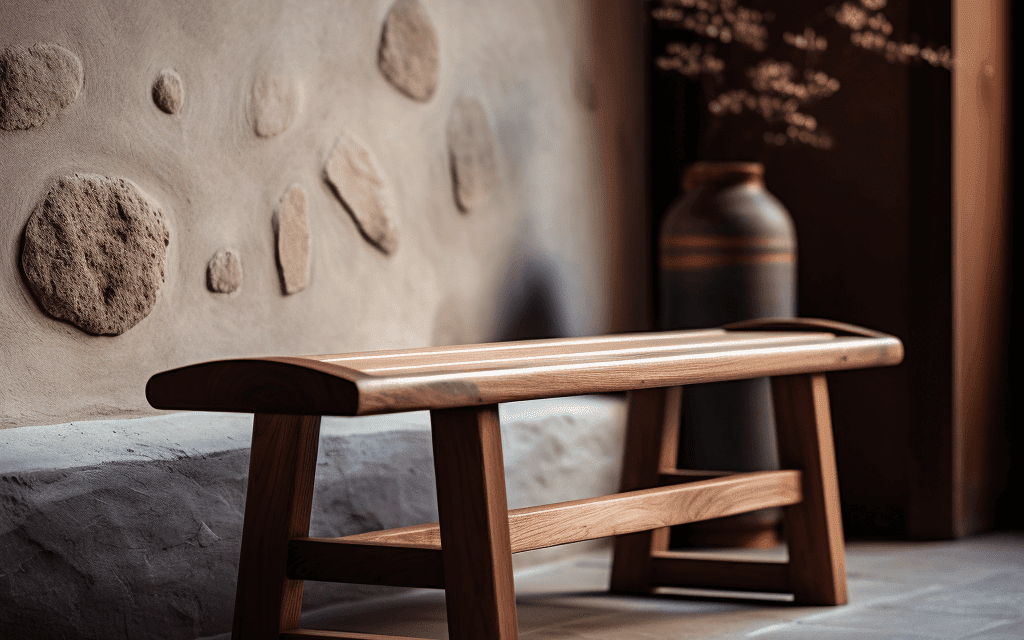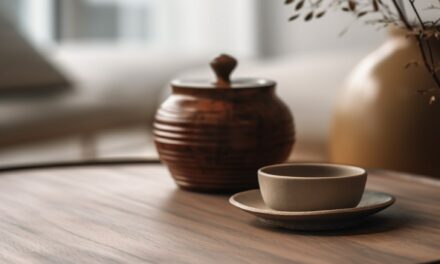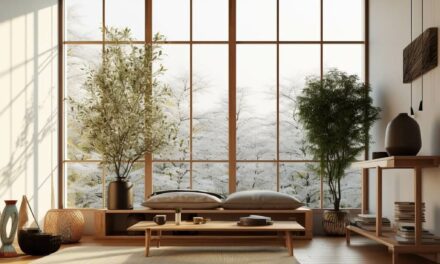One of the key components of Japandi design is the use of textures and fabrics. In this article, I will delve into the world of Japandi Textures and Fabrics, exploring the Japanese-inspired textile trends, Scandinavian-Japanese fusion fabrics, and the natural and sustainable materials used in Japandi decor.
Key Takeaways:
- Japandi interior design combines Japanese and Scandinavian influences.
- Textures and fabrics are key elements in Japandi design.
- Japandi Textures and Fabrics include natural and sustainable materials.
- Minimalist fabric textures and eclectic fabrics are also commonly used in Japandi design.
Understanding Japandi Interior Design Textures
When it comes to Japandi interior design, textures play a crucial role in creating a harmonious and balanced space. Japandi Textures and Fabrics draw inspiration from both Japanese and Scandinavian design influences, blending minimalism, nature, and elegance. It is all about creating a serene and tranquil atmosphere in your home through the use of simple yet sophisticated textures and materials.
The Japandi style often features uncluttered spaces, with clean lines, and natural materials. One of the most defining features of this design is the use of natural wood textures, which help to create a sense of warmth and comfort, while also adding an element of nature to the overall aesthetic.
Japandi interior design textures are often characterized by their simplicity and softness. For instance, cotton and linen fabrics are very popular, as they are breathable, soft, and lightweight, making them ideal for creating a serene atmosphere in your home. Additionally, they are versatile, easy to care for and can be used in a variety of ways to add depth and texture to the interior space.
When it comes to Japandi Textures and Fabrics, it’s essential to consider the blend of Japanese and Scandinavian design influences, which can be seen in the use of minimalistic and sleek designs, such as wool and silk textiles, which add a luxurious touch to the space. These textures are often paired with earthy or muted tones, creating a calm and relaxing environment.
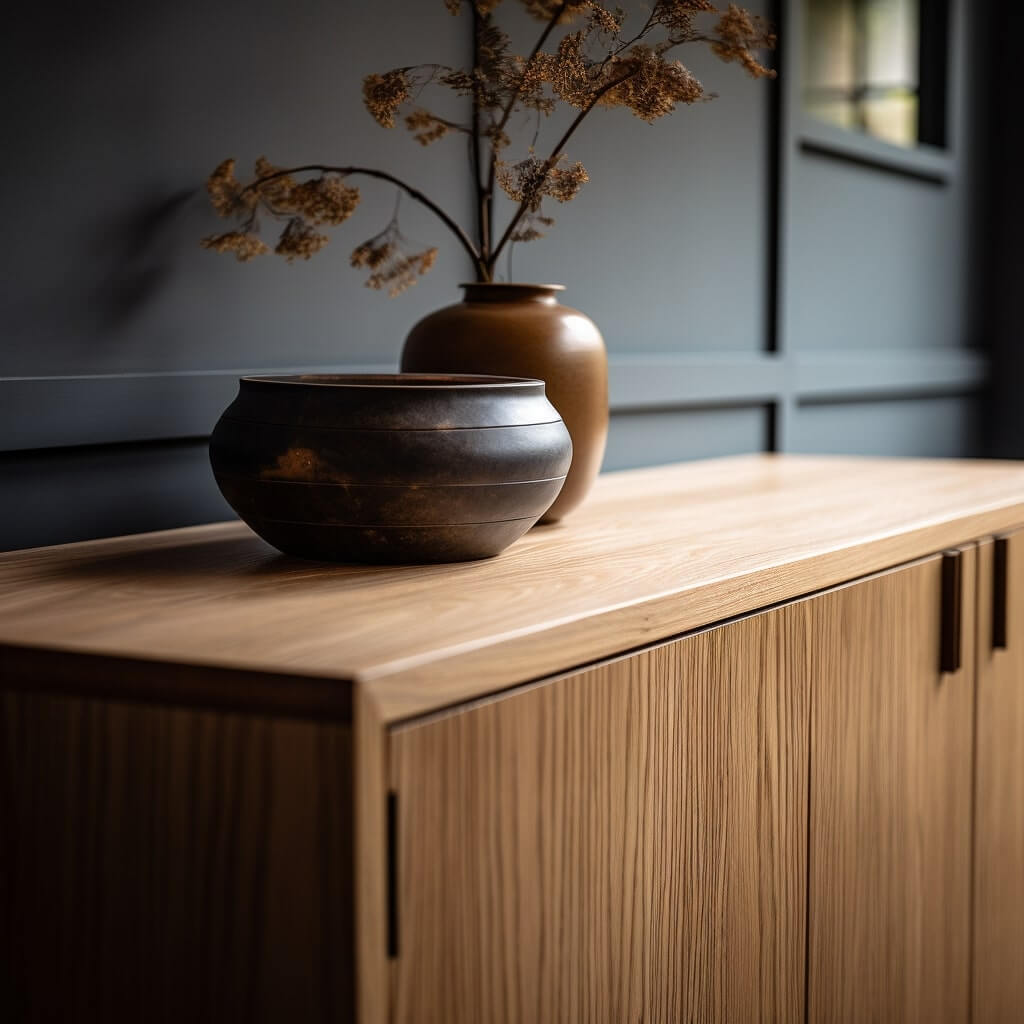
The Beauty of Minimalist Fabric Textures in Japandi Style
If you’re a fan of Japandi interior design, minimalist fabric textures are a must-have in your home decor. These textures fit perfectly with the clean lines and simplicity that define the Japandi aesthetic.
When selecting fabrics for Japandi-inspired spaces, look for those made from natural and sustainable materials. These eco-friendly textiles are an essential element of the Japandi design trend, which emphasizes a more mindful and conscious approach to interior design.
The minimalist fabric textures in Japandi style are characterized by their simplicity and elegance. Think of neutral color palettes, subdued patterns, and clean lines. These fabrics may include linen, cotton, wool, and other natural fibers.
By incorporating minimalist fabric textures into your Japandi-inspired space, you can create a serene and calming atmosphere. These textures work well for both large and small spaces, and can provide a beautiful foundation for other elements of Japandi decor.
When it comes to choosing minimalist fabric textures for your Japandi-inspired space, less is often more. Stick to a limited palette of colors and patterns to create a cohesive and harmonious look. A few well-chosen textiles with simple, elegant patterns can go a long way in creating the Japandi aesthetic you’re after.
With their simplicity and elegance, minimalist fabric textures are an essential element of Japandi design.
Exploring Natural and Sustainable Materials in Japandi Decor
In Japandi interior design, the use of natural and sustainable materials is essential to creating a harmonious and eco-friendly aesthetic. From bamboo and jute to linen and cotton, the materials used in Japandi textures and fabrics are carefully selected for their quality, durability, and environmental impact.
Many of the materials used in Japandi decor are sourced from nature, such as wood, stone, and clay. These materials are often left untreated or minimally processed, highlighting their natural beauty and texture. In addition, they provide an earthy and grounding feeling to the spaces they are used in.
When it comes to fabrics, Japandi-inspired textiles often feature natural fibers such as organic cotton, linen, and wool. These materials are not only sustainable but are also gentle on the skin and provide a comfortable and cozy feel to any space.
Another popular material used in Japandi design is bamboo. Known for its sustainability and versatility, bamboo is used in everything from flooring to furniture and even textiles. Its light and airy texture make it a perfect addition to any Japandi-inspired space.
Incorporating natural and sustainable materials into Japandi interior design is not only a way to create a beautiful and harmonious living space, but it is also a way to contribute to a more sustainable and environmentally conscious future.
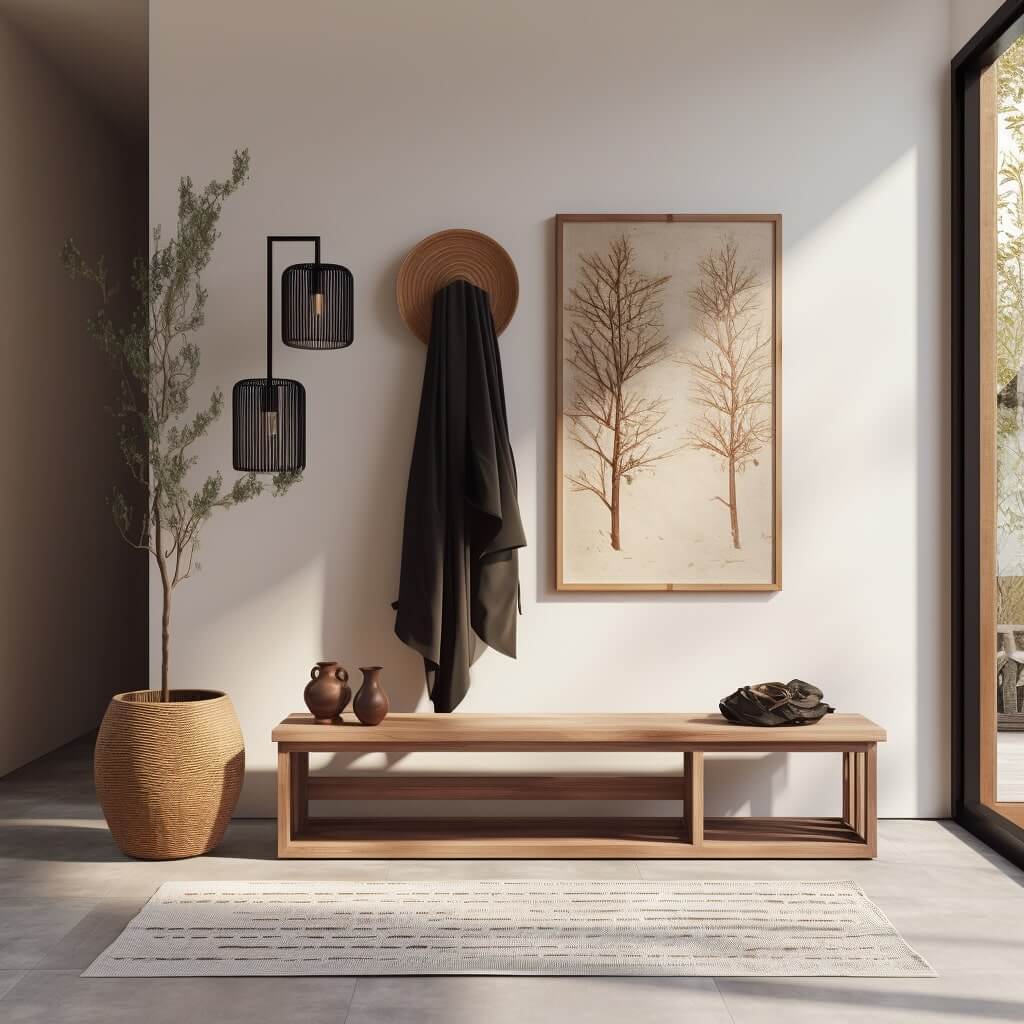
The Charm of Japanese-Inspired Textile Trends
When it comes to Japandi Textures and Fabrics, Japanese-inspired textile trends play a significant role in creating the perfect fusion of Japanese and Scandinavian design. From bold patterns to subtle hues, Japanese-inspired fabrics offer a wide range of design possibilities that can transform any interior space.
Scandinavian-Japanese fusion fabrics take inspiration from traditional Japanese textiles and infuse them with minimalist Scandinavian design elements. The result is a perfect balance of simplicity and sophistication that is both elegant and timeless.
The use of Japandi interior design textures is one of the most significant features of this trend. Natural fibers such as linen, cotton, and wool are commonly used in Japandi textiles to create a calm and serene ambiance, imbued with a sense of warmth and comfort.
Whether you prefer subtle, minimalist designs or bold patterns, Japanese-inspired textile trends offer a range of options for achieving the perfect Japandi aesthetic. From geometric shapes and organic prints to nature-inspired patterns, these fabrics can be incorporated into curtains, upholstery, cushions, or even wall art.
Creating an Eclectic Japandi Aesthetic with Fabrics
While minimalism is at the heart of Japandi style, it doesn’t mean you have to limit yourself to one simple texture or pattern. In fact, mixing and matching different fabrics can add character and personality to your space while still maintaining a harmonious balance.
When it comes to incorporating eclectic fabrics into your Japandi-inspired space, consider combining different textures, such as a soft and cozy knit throw with a sleek and smooth satin pillowcase. Additionally, adding pops of color in the form of patterned accent pillows or a statement rug can bring visual interest to the space while still fitting within the Japandi aesthetic.
Japanese-inspired textile trends offer a wide array of patterns and designs that can be mixed and matched to create an eclectic yet cohesive look. Consider combining traditional Japanese motifs, such as botanical prints or watercolor landscapes, with Scandinavian-inspired neutral tones and textures for a truly unique aesthetic.
Remember, the key to creating an eclectic Japandi aesthetic with fabrics is to find a balance between the minimalism of Japandi style and the character and personality that eclectic fabrics can bring to the space.
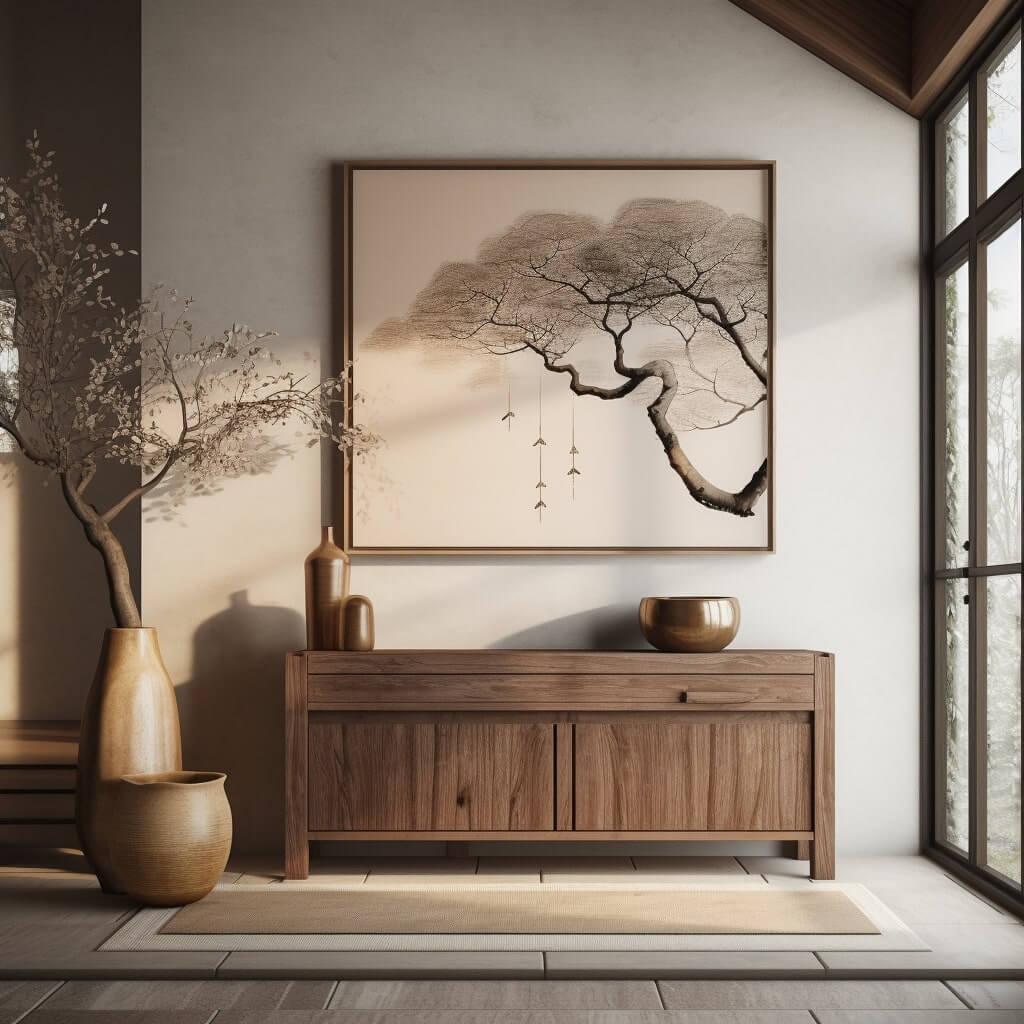
Blending Japanese and Scandinavian Textiles in Harmony
In Japandi design, the fusion of Japanese and Scandinavian influences creates a harmonious and balanced aesthetic. This also applies to the textures and fabrics used in Japandi interiors. Japanese textiles often feature organic and nature-inspired patterns, while Scandinavian textiles are known for their simplicity and clean lines. Together, they create a unique and cohesive visual experience.
When working with Japandi Textures and Fabrics, it’s important to maintain a balance between the two design influences. This can be achieved by using simple and minimalist fabrics with subtle Japanese-inspired patterns, or by incorporating bolder and more eclectic fabrics that combine both Japanese and Scandinavian elements.
Some of the most popular Japandi interior design textures include natural and sustainable materials such as linen, bamboo, and wool. These materials not only evoke a sense of calm and tranquility, but also promote an eco-friendly approach to decorating.
To create a harmonious blend of Japanese and Scandinavian textiles, consider using them in similar color palettes. Neutral tones such as white, black, and gray are commonly used in Japandi interiors, but adding a pop of muted color can add depth and interest to the space.
The beauty of Japandi Textures and Fabrics lies in their ability to create a timeless and classic aesthetic. By blending Japanese and Scandinavian elements in harmony, these textures and fabrics can withstand changing trends and continue to bring sophistication and elegance to interiors for years to come.
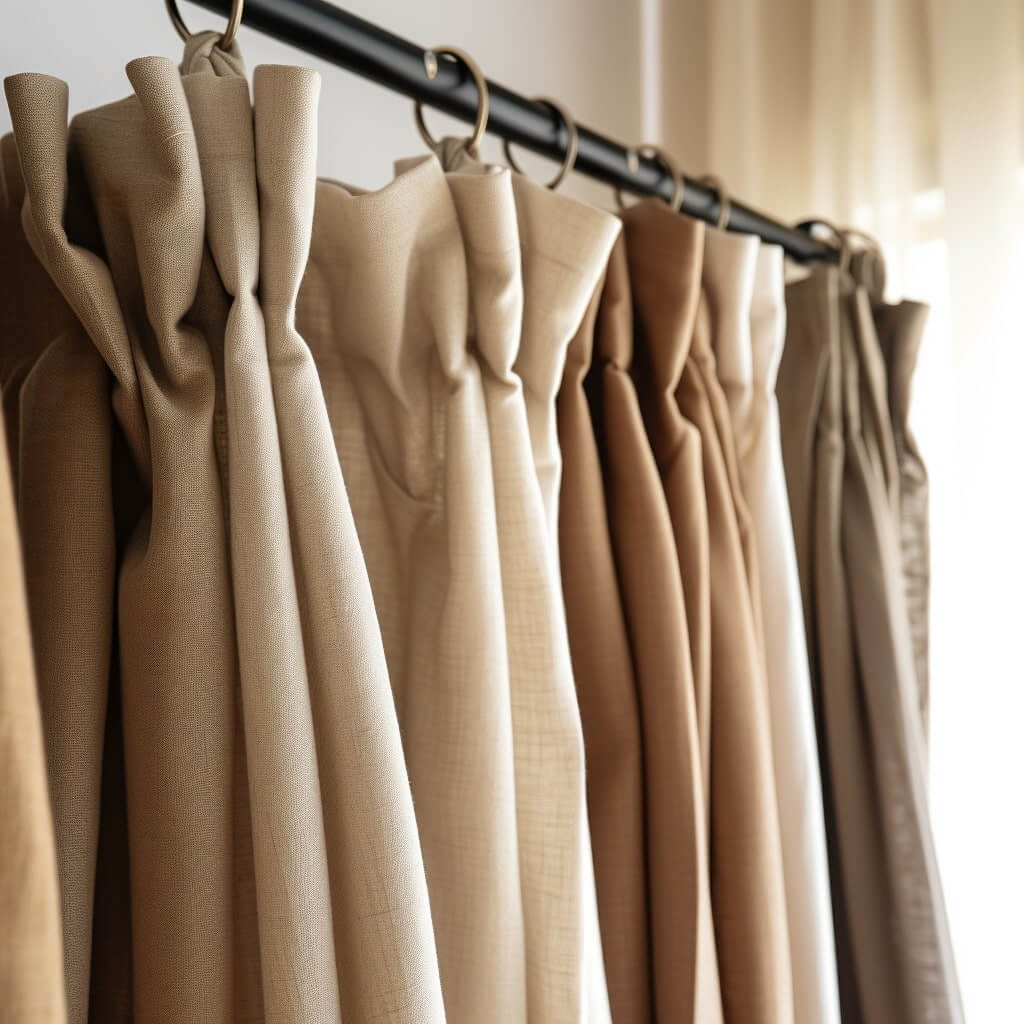
Unveiling Japandi-Inspired Fabric Patterns
In Japandi design, fabric patterns play a crucial role in adding character and dimension to a space. Inspired by Japanese design, these patterns often incorporate nature-inspired motifs such as leaves, flowers, and branches. Scandinavian influence can also be seen in the geometric elements and clean lines that define Japandi-inspired fabric patterns.
One common pattern in Japandi design is the Asanoha pattern, which features a repeating geometric motif inspired by the hemp leaf. This pattern adds a touch of simplicity and elegance that perfectly complements the Japandi aesthetic.
Another nature-inspired pattern commonly found in Japandi design is the Sakura pattern, which features delicate cherry blossom branches. This pattern brings a sense of calm and serenity to a space, creating a relaxing atmosphere that is perfect for unwinding after a long day.
In addition to these patterns, Japandi design also incorporates minimalist patterns such as stripes, dots, and grids. These patterns add texture to a space while maintaining the clean and simple lines that define the Japandi style.
| Japandi-Inspired Fabric Patterns | Description |
|---|---|
| Asanoha | A repeating geometric motif inspired by the hemp leaf |
| Sakura | A delicate pattern featuring cherry blossom branches |
| Stripes | Minimalist pattern featuring bold or thin lines |
| Dots | Simple pattern featuring small circles |
| Grids | Pattern featuring a repeating grid of squares or rectangles |
When incorporating Japandi-inspired fabric patterns into your home, it’s important to mix and match patterns to create an eclectic yet harmonious look. Pairing a bold Asanoha pattern with a delicate Sakura pattern can add a unique and personalized touch to your space. Similarly, mixing minimalist patterns with natural patterns can create a sense of balance and harmony.
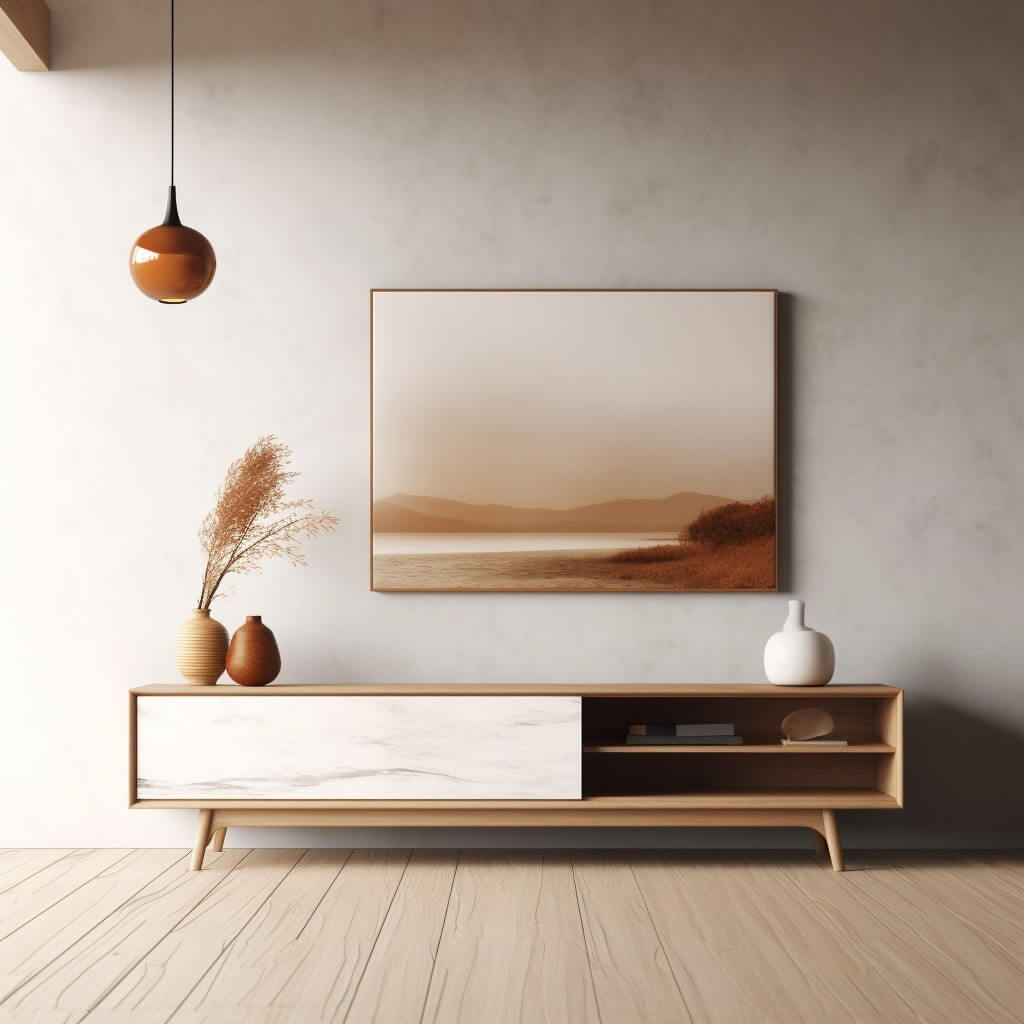
Japandi-Inspired Fabric Patterns: Takeaways
- Japandi-inspired fabric patterns often incorporate nature-inspired motifs and geometric elements
- Asanoha and Sakura patterns are commonly found in Japandi design
- Minimalist patterns such as stripes, dots, and grids are also used in Japandi interiors
- When incorporating Japandi-inspired fabric patterns, mix and match different patterns to add personality and uniqueness to your space
Elevating Home Aesthetics with Japandi Textiles and Fabrics
If you are looking to add a touch of elegance and sophistication to your home interior, Japandi Textures and Fabrics are your go-to solution. Blending Japanese-inspired textile trends with Scandinavian-Japanese fusion fabrics, Japandi design offers a unique approach to home decor that emphasizes simplicity and natural materials.
For a minimalist Japandi style, choose fabrics with clean lines and a neutral color palette. Natural fibers such as cotton, linen, and wool are perfect for achieving the desired look. Be sure to focus on quality and durability when selecting Japandi Textures and Fabrics for your home; these should be pieces that will last for years to come.
To add a touch of personality to your Japandi-inspired space, consider incorporating eclectic fabrics with playful patterns and colors. This will add a unique touch to your home while still maintaining the harmonious balance of Japanese and Scandinavian design influences.
The beauty of Japandi Textures and Fabrics lies not only in their aesthetic appeal but also in their eco-friendliness. Japandi design emphasizes the use of natural and sustainable materials, making it the perfect choice for those seeking a more environmentally conscious approach to interior design.
When incorporating Japandi Textures and Fabrics into your interior design, start with small accents such as throw pillows, curtains or table runners. This will help you get a feel for the Japandi aesthetic and allow you to experiment with different textures and patterns, gradually building up to larger pieces such as upholstery or rugs.
Embracing the Japandi Style: Textures and Fabrics as Key Elements
When it comes to Japandi design, textures and fabrics play a crucial role in creating a harmonious and balanced living space. Japandi Textures and Fabrics are a blend of Japanese and Scandinavian influences, resulting in a unique and timeless aesthetic that is both simple and sophisticated.
One of the key aspects of Japandi interior design textures is the focus on natural and sustainable materials. From linen and cotton to wool and bamboo, these materials imbue a sense of eco-friendliness and promote a more conscious approach to interior design. The use of natural materials also contributes to the overall simplicity and minimalism that characterizes Japandi design.
Minimalist fabric textures are also an essential element in Japandi style. The clean lines and simplicity of such textures create a sense of balance and tranquility, making them a perfect complement to the natural materials commonly used in Japandi decor.
Creating an eclectic Japandi aesthetic is all about mixing different textures and patterns to add a touch of personality and uniqueness to your living space. This is where the influence of Japanese-inspired textile trends comes in. Incorporating these patterns and motifs into Japandi-inspired spaces can bring a pop of color and add interest without detracting from the overall simplicity of the design.
Finally, it is important to note the harmonious blend of Japanese and Scandinavian textiles that characterizes Japandi design. The combination of these two design influences creates a balanced and cohesive aesthetic that is both elegant and timeless.
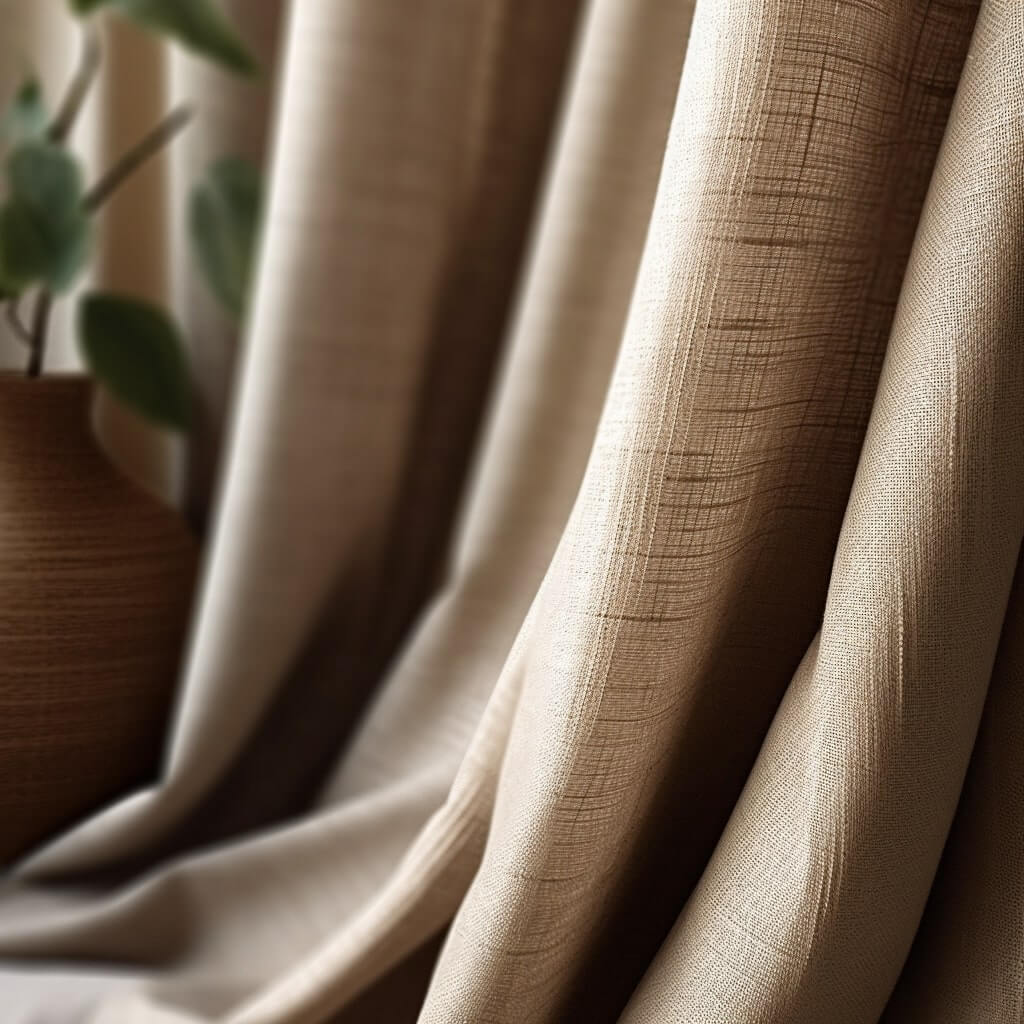
FAQ
Q: What are Japandi Textures and Fabrics?
A: Japandi Textures and Fabrics refer to the fusion of Japanese and Scandinavian design influences in home aesthetics. They bring together the elegance, simplicity, and sophistication of both styles.
Q: What are some common textures in Japandi interior design?
A: Common textures found in Japandi interior design include natural and sustainable materials, clean lines, minimalist fabric textures, and eclectic fabric combinations.
Q: How do minimalist fabric textures contribute to the Japandi style?
A: Minimalist fabric textures perfectly complement the Japandi style by adding simplicity and clean lines. They contribute to the overall aesthetic of Japandi-inspired spaces.
Q: Why is using natural and sustainable materials important in Japandi decor?
A: Using natural and sustainable materials in Japandi decor not only enhances the eco-friendly aspect of the design but also promotes a more environmentally conscious approach to interior design.
Q: What are some Japanese-inspired textile trends commonly seen in Japandi design?
A: Japanese-inspired textile trends in Japandi design often include unique patterns, colors, and motifs that showcase the influence of Japanese culture on the overall aesthetic.
Q: How can eclectic fabrics be used to enhance the Japandi aesthetic?
A: Eclectic fabrics can be used to add personality and uniqueness to Japandi-inspired interiors. Mixing different textures and patterns creates a visually interesting and dynamic space.
Q: How do Japanese and Scandinavian textiles blend harmoniously in Japandi design?
A: Japanese and Scandinavian textiles blend harmoniously in Japandi design by combining their unique elements to create a balanced and cohesive aesthetic.
Q: What are some fabric patterns inspired by Japandi design?
A: Fabric patterns inspired by Japandi design often include geometric, organic, and nature-inspired patterns that add visual interest and depth to interiors.
Q: How can Japandi textiles and fabrics elevate home aesthetics?
A: Japandi textiles and fabrics have the transformative power to enhance home aesthetics by adding sophistication, elegance, and a sense of balance to interior design.
Q: Are Japandi textures and fabrics timeless?
A: Yes, Japandi textures and fabrics are timeless as they can withstand changing trends and continue to bring beauty and elegance to interiors for years to come.
Q: How do textures and fabrics play a key role in embracing the Japandi style?
A: Textures and fabrics play a key role in embracing the Japandi style by contributing to the overall aesthetic and creating a harmonious and balanced living space.
Q: What is the beauty of Japandi textures and fabrics?
A: The beauty of Japandi textures and fabrics lies in their ability to bring together the elegance, simplicity, and transformative power of Japanese and Scandinavian design influences in home aesthetics.







